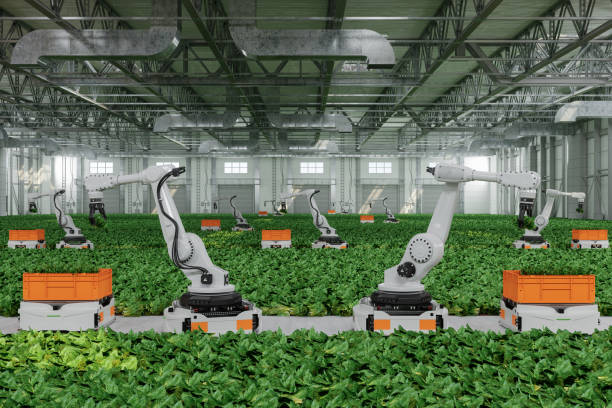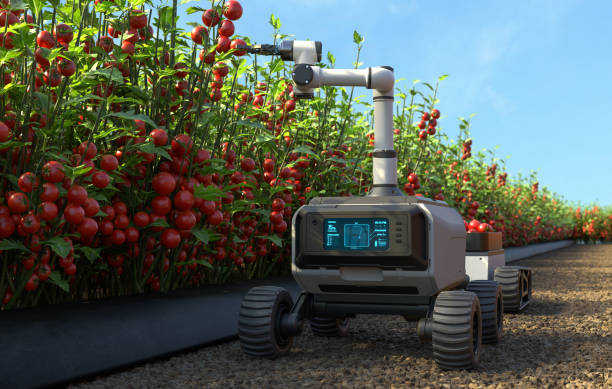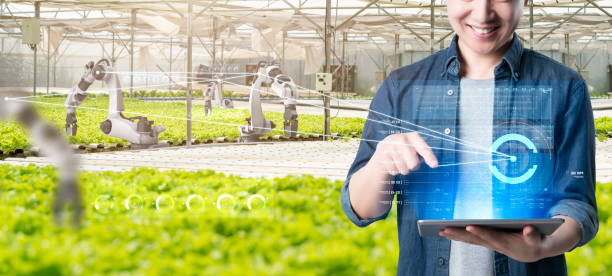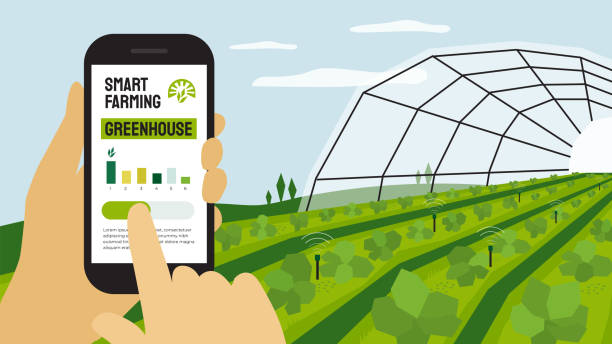
Growing your own fruits, vegetables, and herbs throughout the year is becoming increasingly accessible thanks to home greenhouse automation. Whether you’re a seasoned gardener or just starting your green journey, implementing the right automation technologies can transform your greenhouse into a productive year-round growing space with minimal daily maintenance.
In this comprehensive guide, I’ll walk you through everything you need to know about setting up, optimizing, and maintaining an automated greenhouse system that works effectively across all four seasons.
2025 Greenhouse Automation Trends Transforming Home Growing

The greenhouse industry is evolving rapidly in 2025, with several key developments focused on making greenhouse management more efficient and accessible for home growers. According to recent industry reports, the primary trends include:
Reducing Operating Costs
Today’s greenhouse automation systems focus heavily on optimizing resource usage and reducing operational expenses. Modern technology allows for precise control of water, nutrients, and energy, helping home growers maintain productive environments without excessive costs.
Smart Integration and IoT Solutions
The Internet of Things (IoT) has revolutionized greenhouse automation by creating truly connected growing environments. Smart sensors continuously monitor growing conditions and trigger automated responses, while allowing remote monitoring and control through smartphone applications.
Energy Efficiency Focus
With rising energy costs affecting home gardeners, 2025 has seen a significant shift toward energy-efficient systems. Solutions like solar-powered vent openers provide automatic temperature regulation without requiring electrical connections, reducing both energy consumption and carbon footprint.
Retrofitting Existing Structures
Many homeowners are discovering they don’t need to build new greenhouses to benefit from automation. The trend of upgrading existing structures with smart climate control, precision management systems, and labor-saving technology is gaining momentum as a cost-effective approach to modernization.
Essential Components of an Automated Greenhouse

Creating a successful automated greenhouse requires understanding the critical components that work together to create an optimal growing environment:
Environmental Controller
The environmental controller serves as the “brain” of your automated greenhouse, unifying and regulating all equipment. Advanced models can monitor up to nine different automated systems simultaneously, including temperature, humidity, lighting, CO2 levels, irrigation, and more.
Climate Monitoring Sensors
Reliable sensors form the foundation of any automation system. At minimum, your greenhouse should include:
- Temperature sensors (both ambient and soil)
- Humidity monitors
- Light level meters
- CO2 monitors (for advanced setups)
These sensors provide real-time data to your control system, enabling precise management of your growing environment.
Automated Irrigation System
Water delivery is one of the most important and easiest systems to automate. By implementing automated irrigation, you can put crops on an optimal watering schedule, promoting uniform development and faster growth rates while reducing water usage and labor requirements.
Options include:
- Drip irrigation with programmable timers
- Soil moisture sensor-triggered watering
- Nutrient delivery systems for hydroponic setups
Temperature Control Mechanisms
Maintaining optimal temperature ranges is crucial for year-round growing:
- Automated vent openers (solar or electric)
- Thermostat-controlled heating systems
- Cooling fans with temperature triggers
- Smart ventilation responding to real-time conditions
Lighting Automation
Supplemental lighting is essential, especially during shorter winter days:
- Programmable LED grow lights
- Light sensors that adjust based on natural light levels
- Spectrum-specific lighting for different growth stages
- Timer-controlled systems with seasonal adjustments
Seasonal Automation Strategies for Year-Round Success

Each season presents unique challenges for greenhouse growers. Here’s how automation helps overcome seasonal obstacles:
Winter Automation Essentials
Winter presents the greatest challenge for home greenhouse enthusiasts. Automation can help by:
- Programming supplemental lighting to extend daylight hours
- Implementing energy-efficient heating systems
- Utilizing automated thermal curtains for nighttime insulation
- Monitoring and maintaining optimal humidity levels to prevent condensation issues
Spring Transition Technologies
Spring’s variable conditions require flexible systems:
- Programmable ventilation responding to rapidly changing temperatures
- Automated seedling care systems with specialized humidity control
- Smart irrigation adjusting to increasing water needs
- Light sensors reducing supplemental lighting as daylight increases
Summer Heat Management
Summer heat can quickly damage greenhouse crops without proper automation:
- Automated shade cloth deployment based on light intensity
- Misting systems activated by temperature thresholds
- Scheduled ventilation maximizing cooling during night hours
- Soil moisture monitors increasing watering frequency
Fall Preparation Systems
Autumn requires preparation for the coming winter:
- Gradual light supplementation increases as days shorten
- Automated temperature control adjusting to fluctuating conditions
- Irrigation systems adapting to changing moisture requirements
- Data analysis identifying optimal growing conditions for the coming winter
Choosing the Right System: DIY vs. Commercial Solutions

Your experience level, budget, and growing goals will determine the best automation approach:
Beginner-Friendly Systems
For those new to greenhouse automation, start with:
- Click & Grow Smart Garden 3 – Perfect for small-scale setups with user-friendly automation of watering, lighting, and nutrients
- Basic timer-controlled irrigation systems
- Simple thermostat-activated fans
- Standalone sensor monitors
Mid-Range Solutions for Dedicated Gardeners
As you gain experience, consider:
- Integrated systems controlling multiple parameters
- Solar-powered vent openers for sustainable operation
- Smart controllers with mobile app integration
- Modular systems that allow for gradual expansion
Advanced Systems for Serious Home Growers
For those seeking professional-level results:
- GrowSpan Series 500 systems offering robust coverage and durability for larger home greenhouses
- Advanced thermal induction net machines providing precise environmental control
- Fully integrated IoT systems with data analytics
- Custom solutions designed specifically for your greenhouse and climate
Step-by-Step Setup Guide for Basic Greenhouse Automation

Getting started with automation doesn’t have to be overwhelming. Follow these steps:
1. Assessment and Planning
Begin by:
- Documenting your greenhouse dimensions and orientation
- Identifying your local climate challenges
- Setting clear goals for what you want to grow year-round
- Establishing a realistic budget for automation
2. Start with Core Sensors
Install basic monitoring:
- Temperature sensors at plant level and near roof
- Humidity monitors in multiple locations
- Soil moisture sensors in representative plant beds
- Light level meters to establish baseline conditions
3. Implement Basic Irrigation Automation
Water is critical:
- Install a timer-based drip irrigation system
- Add moisture sensors to prevent overwatering
- Set up zones for plants with different water needs
- Include a filtration system to prevent clogging
4. Add Temperature Control Elements
Manage your climate:
- Install thermostat-controlled ventilation
- Add automated shade systems for cooling
- Implement programmable heating for winter
- Consider thermal mass for passive temperature regulation
5. Connect to Central Control System
Bring everything together:
- Select a compatible control hub
- Connect all automated components
- Program seasonal settings
- Set up remote monitoring capabilities
Cost Considerations and Return on Investment
Initial Investment Analysis
Automation costs vary widely based on greenhouse size and sophistication:
- Basic automation (timers, simple sensors): $200-500
- Mid-range systems (integrated controls, remote monitoring): $500-2,000
- Advanced solutions (full climate control, data analytics): $2,000-5,000+
Energy Efficiency and Resource Savings
Automation typically reduces:
- Water usage by 30-50% through precision irrigation
- Energy costs by 20-40% with optimized heating/cooling
- Plant loss by 25-60% through consistent conditions
- Labor time by 50-80% with automated maintenance
Most home greenhouse owners report automation systems paying for themselves within 2-3 years through resource savings and increased production.
Frequently Asked Questions
What are the essential components for a basic automated greenhouse?
At minimum, an automated greenhouse should include temperature sensors, humidity monitors, automated irrigation, ventilation control, and a central system to manage these components. This foundation can be expanded as needs and budget allow.
How much does it cost to automate a small home greenhouse?
Basic automation for a small greenhouse typically costs between $200-500 for essential components. Mid-range systems with more integration cost $500-2,000, while comprehensive solutions can exceed $2,000 depending on features and greenhouse size.
Can I automate my existing greenhouse or do I need to build a new one?
Existing greenhouses can absolutely be automated. In fact, retrofitting with updated ventilation, lighting, and heating systems is a growing trend that allows older greenhouses to function efficiently without requiring massive investments.
What’s the best way to control greenhouse temperature in extreme climates?
In extreme climates, layered approaches work best: combine passive systems like thermal mass and insulation with active systems such as smart ventilation, automated shading, and energy-efficient heating and cooling systems.
Conclusion
Automating your greenhouse is an investment that pays dividends in time savings, consistent harvests, and year-round growing capabilities. By starting with essential components and expanding your system as you gain experience, you can create a custom solution perfectly tailored to your growing goals and local climate.
The technology continues to advance rapidly, with 2025 bringing more affordable, efficient, and user-friendly options for home growers. Whether you’re looking to extend your growing season or create a fully autonomous growing environment, today’s automation solutions make it possible to harvest fresh produce from your greenhouse in every season.